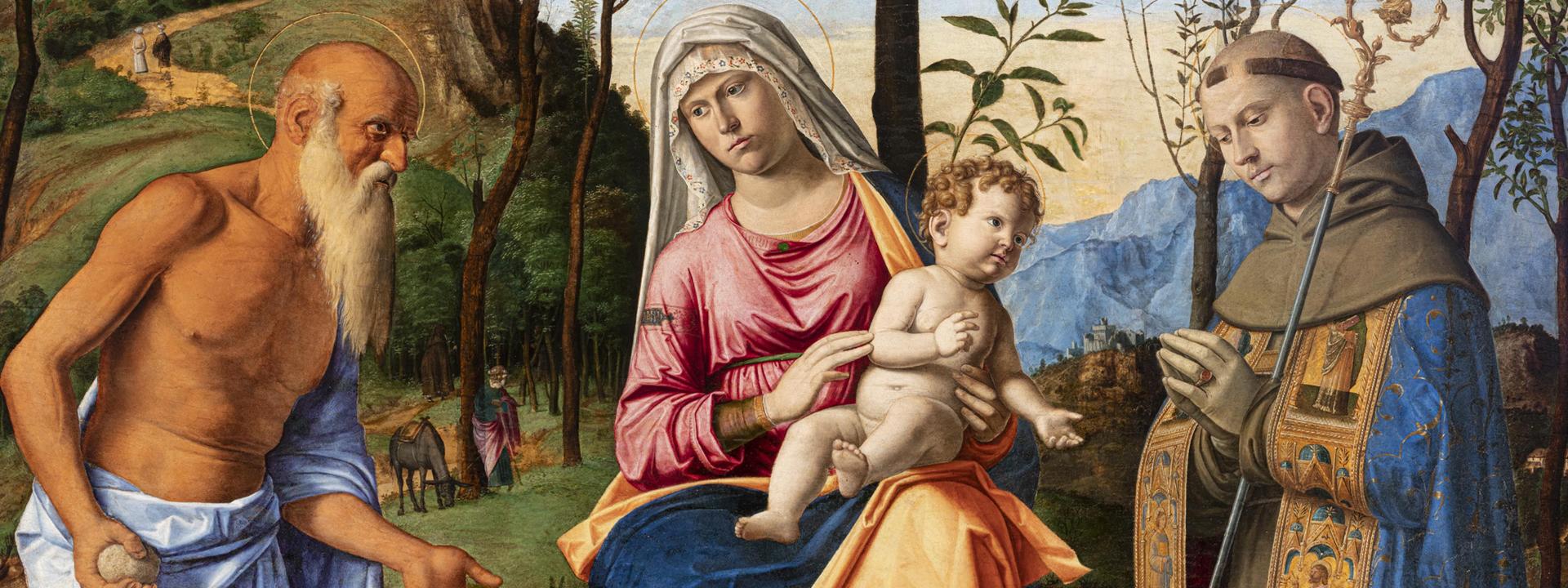From the church of the Observant Franciscan nuns of Santa Chiara on Murano, the work was transferred to the Palazzo Reale in Venice after it was brought under state ownership in 1810. Sebsequently, it was sent to Vienna (the Hof Museum) in 1816 and finally to the Gallerie dell’Accademia in 1919 after World War I. Cima da Conegliano (who signed his name in the cartouche at the bottom of the Virgin’s rock throne) sets this sacra conversazione in an open space, dominated by allegorical plants and animals. Particularly outstanding is the orange tree behind the Virgin–Child group, whose flowers symbolise the purity of the Virgin and whose fruit references her role as the new Eve. Another interesting choice is that the figure of Joseph and the donkey are placed in the background to evoke the iconographic theme of the flight into Egypt, thus naturalistically connoting the scene, where a realistic landscape is populated by reciprocally interacting individuals, plants, and animals. The fact that the altarpiece was destined for a Franciscan order is underlined by the figure of Louis of Toulouse, who renounced the throne of France to join the Franciscans, and also the friars who are walking up a hillside leading to a promontory displaying a citadel that recalls Conegliano, the painter’s native town.
- Visit
- What's on
- On-line collections
- SEATS
- Exhibitions
- EDUCATION PROGRAMMES
- Online Activities
- Artworks not on display
- SPACES AND IMAGES CONCESSIONS
- SUPPORT US
-
TRANSPARENT ADMINISTRATION
- GENERAL PROVISIONS
- ORGANISATION
- CONSULTANTS AND COLLABORATORS
- STAFF
- PERFORMANCE
- Bandi e gare
- CONTRACTS
- Determine
- PROVVEDIMENTI
- BALANCE SHEETS
- GRANTS, CONTRIBUTIONS, SUBSIDIES, ECONOMIC ADVANTAGES
- ADMINISTRATIVE PAYMENTS
- LEGAL PROCEDURES
- ADMINISTRATIVE SUPERVISION AND EVALUATION
- ACCESSO CIVICO
- SERVICES PROVIDED
- OTHER CONTENTS
- CREDITS
- CONTACT
- English
- italiano







